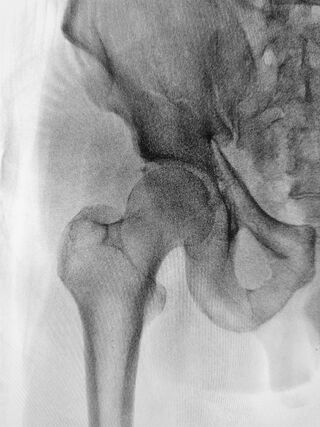Chronic Pain
How to Stop the Pain
New strategies offer the promise of pain relief.
Posted October 25, 2021 Reviewed by Davia Sills
Key points
- More than 50 million Americans live with chronic pain.
- Several unique studies and approaches may provide pain relief without drugs.
- Approaches that alter the way the mind and body process pain are most effective.

The x-ray of my hip looks like a weather pattern. A storm of thunderclouds moving in. The joint is gone, eroded by rheumatoid arthritis.
The pain changes from day to day. Sometimes it is grinding friction. Other times a deep ache. Sometimes it is sharp up through the groin or down into my knee. But it’s always present. It’s chronic. And it’s a part of my life.
I’m not the only one, of course. More than 50 million Americans live with chronic pain, according to the Centers for Disease Control and Prevention (CDC), as a result of lower back injuries, regular migraines, arthritis, cancer, and other illnesses and accidents.
And it isn’t just the one with chronic pain who hurts. A single individual living with chronic pain impacts families, workplaces, friendships, and communities.
I work daily to manage the changing nature of my pain, but often that means managing my activity and fatigue too. I’m doing less around the house now. I’ve stopped volunteering in the community, and I’m experiencing more fatigue that demands rest.
My focus and productivity at work are also taking a beating. It takes me longer to get posts out because concentration wavers. Some days, it’s hard to regulate my mood. On a rough pain day, I’m much more impatient and irritable around here. Not fun for any of us to live with.
Yet, most days, I can manage my pain effectively in a way that allows me to live the life I want. Takes effort, for sure, but there are a lot of things that help. And I’m hopeful because new research is identifying other mind-body approaches that will change how we experience pain and maybe ease it altogether.
Pain remedies and research
Scores of studies have shown that mindful breathing and meditation can ease pain by focusing attention on internal sensory details rather than the pain response.
Because pain is a process that occurs in both the brain and the body, when we change how the brain is activated, it can change how we hurt.
Mindfulness meditation does this by activating the frontal regions of the brain to compete with pain signals, cluttering up the way the body processes pain, causing us to perceive less.
But a new study indicates that a virtual reality experience where the participants watch a pair of virtual 3D lungs breathing also provides powerful pain relief in an opposite way by creating an immersive, external experience that engages our other senses and diminishes our perception of pain.
Alexandre DeSilva, who led the research, and the University of Michigan are now looking at ways to provide this virtual reality breathing experience to others through an application and other methods.
Another hopeful pain management approach is being investigated at Lund University in Sweden, where doctors are using ultra-thin microelectrodes to provide customized pain relief without drugs and their side effects.
The microelectrodes are implanted to activate the brain’s control center without stimulating the nerve cell circuits. Doctors can then select the electrodes individually or in clusters to suit the patient’s unique needs. The pain is blocked by activating the brain’s pain control centers and blocking the signals along the pain pathways.
It’s early, but the study’s author, Matilde Forni, says, “We have achieved an almost total blockade of pain without affecting any other sensory system or motor skill.”
Gene therapy may also supply an opioid-free treatment for chronic pain by temporarily repressing the gene that senses pain. It worked in mice and provided long-term pain relief without numbness or opioids, according to the researchers at the University of California San Diego who developed the approach.
With these and other emerging therapies, those of us living with chronic pain have reason to be hopeful.
Ease pain in the brain
While we can treat the physical triggers of pain with medication, acupuncture, and other medical and naturopathic practices and interventions, working with our thoughts and beliefs about our pain experience is also a powerful way to manage.
When we ruminate about our pain and begin catastrophizing by thinking in absolute terms and dwelling on how bad it is and how much worse it’s going to get, we do heighten our sensitivity to pain. Stress and anxiety also make our pain worse.
Instead, catch your catastrophizing thoughts and reframe them. Notice your thoughts, relax your body through a deep breathing exercise, meditation, or visualization, and replace your debilitating thoughts with something more manageable and true, such as, “Pain changes; it won’t always be like this.”
Or try something more direct to detach from the moment, such as, “What am I thinking right now? What ideas were going through my head?”
When we disrupt the negative thought pattern, we disrupt the mental triggers that can cause physical pain to flare.




